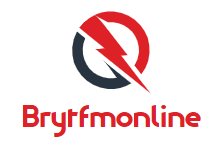In the Dutch countryside about 130km east of Amsterdam there is a hill of unusual appearance, with spiers and flashes over farmhouses, leafless trees, and muddy meadows. The hill, 25 meters high, was created from the spoils of 15 years of domestic and commercial waste, but the highlight is what it covers: 23,000 solar panels.
Dutch solar company TPSolar opened this park, which can produce up to 8.9 megawatts of power, in Armhoede, eastern Netherlands, in mid-2020. The former landfill now generates enough electricity for about 2,500 homes.
The project reflects a broader push in the Netherlands – which now has more than 48 million solar panels installed – and which can be found in a number of innovative sites to explore new capabilities of renewable energy.
with the ground Renewable energy Rare in most parts of the world, the Dutch experiment includes putting solar power in parking lots, trade lakes, sheep grazing fields, strawberry farms, decommissioned churches, train stations and airports. A scenario that could inspire a better positioning of renewable energies around the world.
“Because we have so little space in the Netherlands, it is important to conserve the soil for several reasons,” explains Bernd Nygen Tuelhaar, coordinator of Dutch solar company Solarfields, which operates large farms and has installed no less than 450,000 panels in the country.
“We have to be innovative and creative so that we can produce the electricity that the Netherlands needs to become environmentally friendly,” the official adds.
Today the Netherlands has an average of two solar panels per capita – and an installed capacity of more than 1 kilowatt (KW) per capita – making this country a solar power hub. per person Europe, according to industry association Solar Power Europe.
Solar analysts and contractors say the expansion has been driven by a significant drop in equipment prices, an efficient energy subsidy scheme, and ambitious government goals to reduce greenhouse gas emissions. Global Warming.
The government aims to make 70% of its electricity renewable by 2030, mainly by expanding solar and wind capacity, and It seeks to reduce its emissions, which still place it among Europe’s six major polluters.
Like many EU countries, the Netherlands is also working to reduce its energy dependence on Russia after its invasion of Ukraine. Dutch wind and solar farms have helped fill the electricity supply gap left by gas-fired power plants that have become unprofitable to operate amid record gas prices.
But “Dutch” farmland is also among the most expensive in the European Union, which makes finding space for solar plans expensive.
This reality, combined with the country’s high population density, means solar companies have to get creative when it comes to finding space.
Photo by Sjoerd van der Wal/Getty Images
European leader in solar energy
In recent years, the Netherlands has enshrined climate goals as a renewable energy target in law, pledged to limit onshore oil and gas drilling, and generally boosted green spending. The state budget for renewable energy in 2022 is 13 billion euros ($13.9 billion).
Last year, the country generated 14% of its electricity from solar farms – up from 1% in 2015 – surpassing coal-fired power production for the first time.
The consulting group Ember Claimum told Reuters that the percentage of electricity produced from solar energy is the highest in the European Union.
Meanwhile, the country’s system – established in 2004 – that allows families with solar panels to offset their green electricity production with their consumption – now has more than 2 million homes producing renewable energy, according to the Energy Department.
A spokesperson for the energy ministry told Reuters by email that the Dutch government is still assessing how local planning and financial support can be changed to encourage more solar farm construction to blend into the landscape.
Joeri Jacobs, who focuses on building green energy projects at waste management company Afvalzorg, described the Dutch approach to renewable energy as “extremely MacGyver-ish— referring to an 1980s American TV show about a handyman who assembles innovative devices from everyday objects.
“We take different energy technologies, combine them and try to make a combination that works,” explains Jacobs, whose company has partnered with a local utility to convert abandoned landfills into solar farms. “It takes a while, but when everyone hops on the same train, it’s faster to get these projects done.”
Pierre Krum/Getty Images
Local interests first
Roughly 20% of the lowland country’s surface is water, and solar energy promoters, including GroenLeven, have taken advantage of setting up farms on man-made lakes.
The company has installed more than 500,000 solar panels in Dutch waters, leaving the Netherlands behind China globally when looking at this type of location, the company noted.The idea of floating solar platforms appeared in the Netherlands earlier than in other countriessaid Benedikt Ortmann, global director of solar projects at German renewable energy company BayWare, which acquired GroenLeven in 2018.
Inspired by the Dutch example, BayWare said it is now developing more floating solar installations in European countries such as Belgium, Austria and France.
Dutch companies are also looking at ways to make solar energy facilities work in tandem with agricultural production. “Rather than having to fight over who gets access to the land, we came up with solutions to use it together,” suggests Karel Koeij, business development manager for large-scale photovoltaics (PV) at the Dutch branch of Swedish public company Vattenfall.
A project called “Agri-PV” involves growing strawberries and blueberries under a solar panel roof, replacing the plastic sheeting traditionally used by farmers in greenhouses. Halfway through the four-year pilot project, project leaders said the plants needed 25% less water because they were out of the sun, which could save water for irrigation in the future when Climate change It brings hotter and drier summers.
In general, Dutch solar developers say new projects should be designed with local concerns in mind. The country’s climate plan for 2019, for example, says so Renewable energy projects should aim to allocate 50% of the green energy they produce to the local population.
Although this is not legally binding, developers tend to invest in the community – from sending a percentage of the renewable energy produced to local energy cooperatives, for example, or creating a socio-economic fund to make improvements to Energy efficiency.
“Because the Netherlands is a small country, we are always working in someone’s backyard,” notes Robert van der Horst, project developer at TPSolar. So, he notes, “You always need to talk to people and discuss what’s best for a particular area. Then you try to improve that with your own solar farm.”

“Infuriatingly humble analyst. Bacon maven. Proud food specialist. Certified reader. Avid writer. Zombie advocate. Incurable problem solver.”

